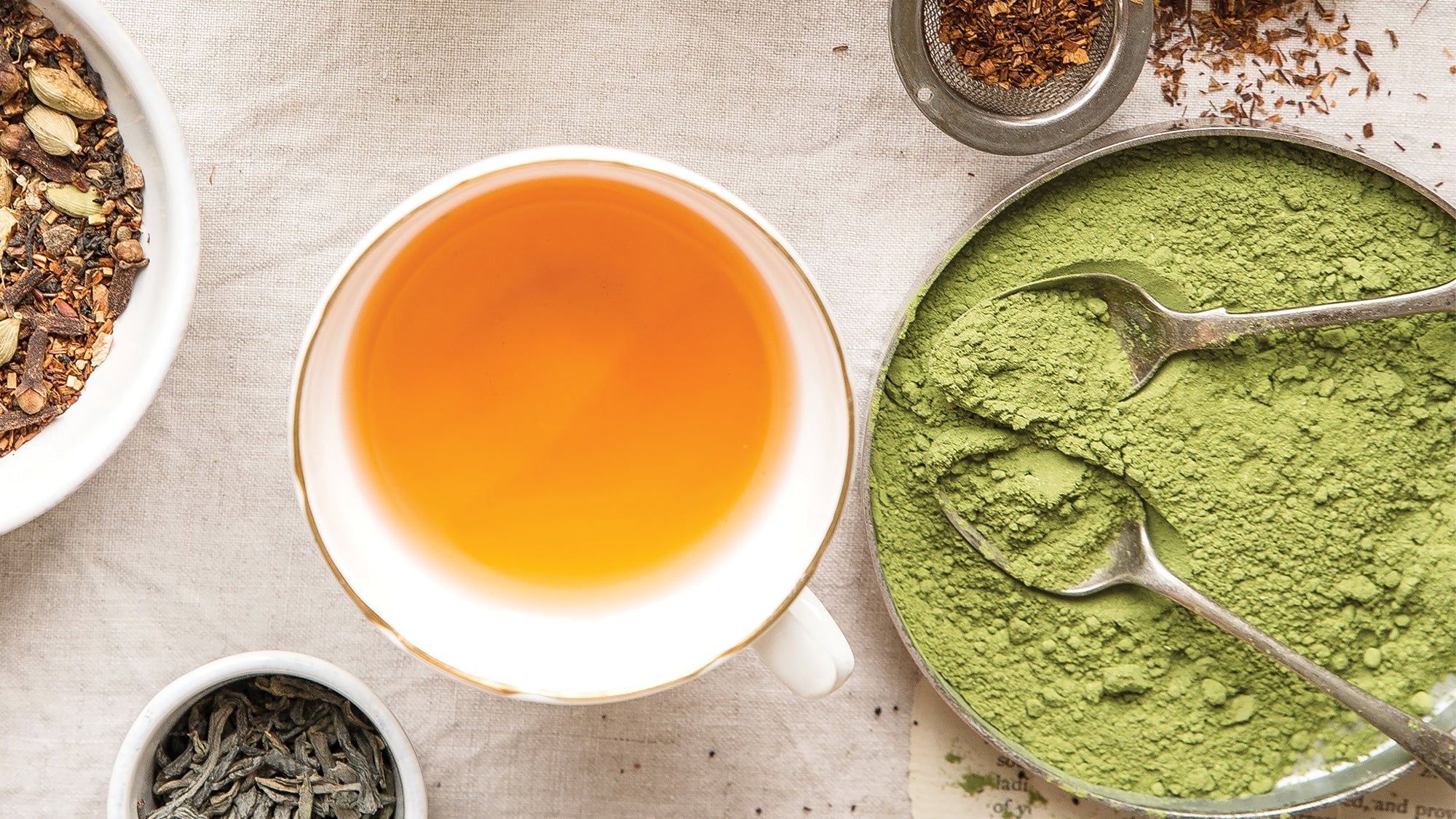Is Matcha Really Better Than Green Tea?

Matcha is to green tea as Kobe beef is to steak.
Both matcha and green tea come from the plant Camellia sinensis, but matcha tea bushes are shielded from direct sunlight for roughly a month before the leaves are harvested. After harvesting, the leaves are hand ground into a fine powder and sold as matcha.
Shade growing increases the amount of chlorophyll in the tea leaves. In addition, it preserves the amount of other beneficial compounds in tea like L-theanine, a compound that is known to have a calming effect on the brain.
Another reason matcha is so potent is that you actually consume the whole tea leaves (in powder form). You don’t have a teabag or loose tea leaves to discard after you’re finished steeping the way you do with ordinary tea. Instead, matcha powder is whisked in a bowl with hot water until it foams, at which point you pour it into your teacup to drink. Nothing gets thrown out, which makes it by definition a more concentrated source of beneficial compounds than ordinary steeped green tea.
There are different “recipes” for the perfect matcha, but traditionally it involves 1 teaspoon of high-grade ceremonial matcha powder and about 2 ounces of hot water, placed in a bowl and whisked until the matcha dissolves and foams. There are plenty of other creative ways to enjoy it beyond tea. Try it in lattes, smoothies, oats, puddings, baked goods, yogurt and even frozen in homemade ice cream or popsicles. The possibilities are endless.
It’s a strong taste, but many people, myself included, love it.
Try these recipes featuring matcha: